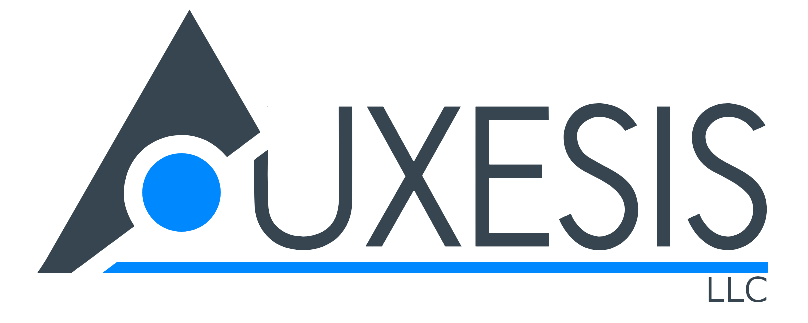The most useful leadership idea you can steal this year is simple and demanding. Systems do not fail because leaders stop caring. They fail because success hardens into safety, safety dulls curiosity, and then an outlier event resets the game. Dr. David Robertson calls this the Adversity Nexus. It is a repeating cycle: Adversity creates Desire, Desire elevates Leaders, Leaders drive Growth, Growth produces Abundance, Abundance seeks Safety, and Safety invites new Adversity.
If you watched the show Foundation, you have seen this cycle in motion. The Empire mistakes ritual for resilience. The Foundation turns math into myth to mobilize people. The Mule shows up as the anomaly that breaks the model. That is not just science fiction. That is your market, your team, and your career.
This article is a practical guide for evolving leaders who want to use the Adversity Nexus to build organizations that get stronger under stress.
Start by locating yourself in the cycle
Before you can lead, you must diagnose honestly. Where are you right now?
- Adversity: Revenue shocks, key attrition, customer churn, supply or capital constraints. Conversations feel urgent and narrow.
- Desire: A clear, specific appetite to change. People are willing to trade comfort for progress.
- Leaders: New voices step forward. Decision velocity increases. Ownership spreads beyond titles.
- Growth: Experiments are landing. Wins are repeatable. Hiring outpaces backfilling.
- Abundance: Cash and goodwill are high. Processes standardize. Pride phrases like we always and we never appear.
- Safety: Risk reviews dominate. You protect the brand more than you pursue the future. Dissent feels impolite.
Write down the leading indicators you see. If you claim abundance but your people are exhausted, you are not in abundance. If you claim safety but cannot identify the risk you are avoiding, you are already in new adversity and do not know it yet.
Three disciplines that keep you moving forward
1) See sooner
Most failures are not surprises. They are ignored signals.
- Listen at the edges: Create a monthly roundtable with front line staff, new hires, and customers who left. Give them the floor first.
- Track anomalies, not averages: Do not drown in dashboards. Maintain a single page of outliers. One page, updated weekly, owned by you.
- Name your Mule: Identify the one outlier that would break your model. A regulation shift, a platform policy change, a supplier collapse, an AI capability, a competitor with a new cost curve. Write a one paragraph description and a first response plan.
- Run pre mortems: Ask a small cross functional group to assume the strategy failed in twelve months and tell you why. Capture and act on the top three reasons.
2) Decide faster
Speed does not mean reckless. It means you choose when choices still matter.
- Classify decisions by reversibility: If a decision is easy to unwind, set a short deadline and a small owner group. If it is hard to unwind, slow down and widen the circle.
- Establish tripwires: Pre agree on the metrics that trigger automatic moves. When X drops below Y for Z weeks, we pause spending or we shift focus. This removes politics from hard calls.
- Use decision logs: One shared page per major decision that records context, options, choice, and date. Review these logs monthly. You will improve judgment simply by seeing your own patterns.
- Delegate to the competent: Authority should track proven ability. Promote based on outcomes and learning speed, not proximity or tenure.
3) Adapt smarter
Resilience is not a slogan. It is capacity you build on purpose.
- Build your Second Foundation: Identify three capabilities that would let you pivot fast in a crisis. Examples include a direct channel to customers, a flexible data stack, and a bench of cross trained generalists. Invest now while you still have time.
- Run drills: Once a quarter, simulate a meaningful shock for two hours. Lose a major account. Lose a key leader. Face a 20 percent cost increase. Practice. Take notes. Fix real gaps.
- Protect a small exploration budget: A fixed percentage of revenue for experiments that may not pay off this quarter. Exploration keeps your curiosity alive during safety phases.
- Shorten learning loops: Move from quarterly to monthly to weekly cycles for experiments where possible. Fast feedback beats perfect plans.
Replace ritual with resilience
Ritual is the comforting story we tell ourselves about why what we do will keep working. Resilience is the messy set of capacities that help us when it does not. Ask these questions in every planning meeting:
- What sacred habit would we stop if we started from zero today
- Where are we choosing consistency over correctness
- Which metric are we worshiping that no longer predicts the outcome we need
If the answer to any of these is unclear, schedule a small experiment that tests the old habit against a new alternative. Pick one, not five. Learn, decide, move.
Use myth without letting it blind you
People need meaning. Your story is a tool. Use it wisely.
- Clarify the purpose: What problem do we exist to solve for our customer, and what future are we building with them
- Invite dissent: Make it safe to tell the story that contradicts the main story. Publish a monthly anomalies memo and thank the authors by name.
- Translate values into behaviors: If you say you value courage, define the two or three behaviors that show courage in your context. Recognition should track those behaviors.
A weekly practice for the evolving leader
Block 45 minutes at the same time each week. Answer these prompts in writing.
- Where are we in the cycle this week and what evidence supports it
- What did I learn from the edges
- Which decision am I delaying that will be more costly next week
- What experiment will run this week and what will we decide based on the result
- What ritual are we testing this month
- Who needs to be recognized for the right behavior
Consistency here will outperform charisma. Quiet, regular attention to the cycle compounds.
Build a leadership culture that survives the reset
Organizations survive resets when many people can do the right thing without waiting for permission. To build that culture:
- Teach the Adversity Nexus to your team in a simple slide with the six stages and two examples from your own history.
- Add a brief stage check to monthly reviews. Name it out loud.
- Reward curiosity. Promote people who find issues early and who change their mind when the facts change.
- Tie recognition to experiments run and lessons learned, not just wins.
- Create an alumni network of former employees and partners. During adversity you will need trusted talent fast.
The move to make this month
Choose one of these and execute.
- Launch an edges roundtable and schedule it for the same time each month.
- Write and share your Mule memo with your leadership team.
- Add tripwires to one key metric and publish them.
- Fund one exploration project at a small but real level for ninety days.
- Run a two hour crisis drill and close the top three gaps within 30 days.
You cannot escape the Adversity Nexus. You can only ride it with clarity. When you see sooner, decide faster, and adapt smarter, adversity becomes a source of energy instead of a reason to retreat. Growth and abundance will follow. Safety will tempt you. When it does, remember that ritual is not resilience. Go back to the edges. Ask better questions. Keep moving.
Leaders do not control the cycle. They shape their response to it. That is enough to change the future.

